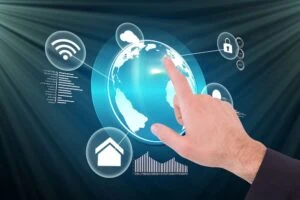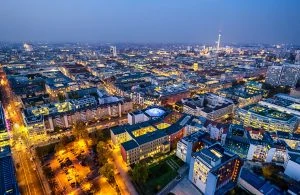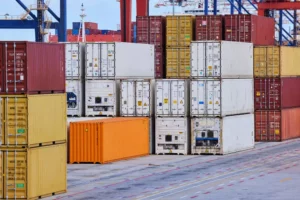Either adapt to the changing times or risk sinking into the depths of history while others evolve. Numerous once very well-known companies failed to take the decisive step at the right time, such as Blockbuster, Empire Records or Toys'R'Us.
In this era of rapid digital advancement characterized by the information revolution, it is crucial to embrace current developments in the Internet of Things (IoT) space to not only survive, but to thrive. This article will highlight the current currents in IoT , outline the evolving landscape and provide an outlook on future trends that are yet to unfold. We will give you an insight into the Internet of Things (IoT) and how these innovations are transforming industries and inspiring adaptability in the business environment.
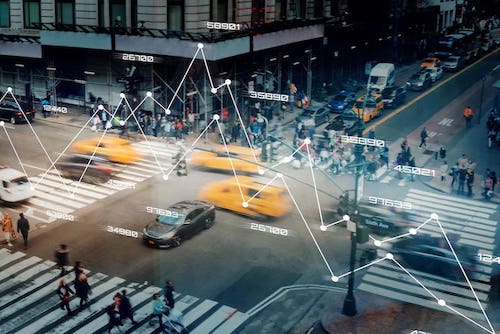
IoT-Accept trends
Today, your smartphone has a computing power a million times greater than the one NASA used to put Neil Armstrong on the moon. Even your Roomba, thanks to its Wi-Fi connection, surpasses in intelligence the 5K computer so cherished by many in the 2000s. Part of this technological advancement is thanks to the Internet of Things (IoT).
The transformative power of IoT is permeating various industries by connecting devices, data and people to enable smarter decisions. It gives devices the ability to adapt, react and anticipate future events.
Companies that strategically integrate IoT technology trends into their business processes experience massive efficiency gains of 10-15%, according to a recent report by McKinsey. These numbers underscore the importance of staying on top of the evolving IoT landscape. Companies that implement IoT technologies not only achieve improved operational efficiency, but also increased customer satisfaction, which in turn leads to sustainable growth.
But what exactly is the IoT? The term "Internet of Things" was coined in 1999 by Kevin Ashton, a British technology pioneer and co-founder of the Auto-ID Center at the Massachusetts Institute of Technology (MIT). Even then, he foresaw a revolutionary change in the way products were manufactured. He realized that most research and development departments were working on the development of devices that could be connected to the Internet. On this basis, he predicted that "in a few years, all things could communicate via the network".
The concept of IoT refers to connecting everyday physical objects to the internet so that they can send and receive data. Essentially, IoT means the integration of sensors, actuators and communication technologies into objects that enable them to exchange data with other devices and systems via the internet. This network of devices has the potential to provide valuable insights, automate processes and improve various aspects of daily life and industry.
Current IoT trends: A look at the current impact of the IoT
IoT in supply chains and logistics
The Internet of Things (IoT ) has rapidly optimized operations and increased efficiency. According to a 2021 survey by DHL Supply Chain, companies that invest in IoT devices and integrate them into their supply chains can see a 20% reduction in overall operating costs.
This impressive statistic is directly reflected in the profit margins: IoT eliminates unnecessary costs and increases the profitability of your company.
Smart cities
Currently, the Internet of Things (IoT) is being used in various cities to create connected urban ecosystems for sustainable living. Governments using IoT technologies can create a smart infrastructure experience and, in many cases, achieve a significant reduction in energy consumption. According to a report by the International Data Corporation (IDC), smart city initiatives lead to a 30 percent reduction in energy consumption, contributing to a more sustainable urban environment.
Industrial IoT - IIoT
The fastest adoption of IoT is currently taking place in manufacturing and operations, as it has essentially revolutionized the entire supply chain. Studies by PwC show that companies using Industry 4.0 technologies have seen a 25% reduction in unplanned downtime.
At its core, IoT not only improves the effectiveness and overall performance of your entire operations, but also leads to significant cost savings.
IoT in agriculture
The IoT has also found its way onto our tables and into our food industry. By using precise IoT tools, farms can increase their yields and optimize the use of resources. Precision farming, enabled by the IoT, increases crop yields and can have a significant impact on downtime. In addition, the predictive algorithms of IoT can be used to forecast weather patterns and help farmers better protect their crops.
IoT in retail
The IoT has rapidly transformed the entire customer experience by enabling individualized interactions. Retailers implementing IoT technologies are experiencing a significant increase in sales through the use of AI and IoT. This ability to provide personalized shopping experiences gives stores a competitive advantage in the retail landscape.
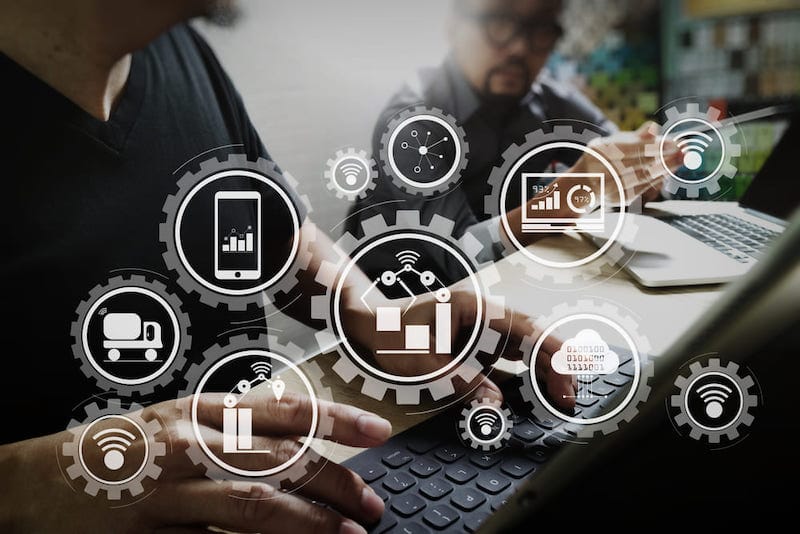
New emerging IoT trends
Future developments in the Internet of Things (IoT) will continue to change the way we work. Here are some key areas to look out for:
Edge Computing
Edge computing refers to processing data closer to the source of its generation instead of using centralized cloud servers. By reducing latency, organizations can improve their real-time processing capabilities and increase their overall computing power. Edge computing is expected to experience tremendous growth and widespread adoption in the coming years, which will significantly increase the potential of IoT systems.
5G integration
The integration of 5G technology will enable faster and more reliable connectivity, accelerating the adoption of IoT platforms and systems. 5G will be a key factor for the widespread adoption of IoT applications in various industries.
AI and machine learning
The market for AI in the IoT sector is expected to grow strongly from 2021 to 2028. The use of machine learning and AI will help to gain actionable insights from large data sets. This will enable companies to make intelligent decisions and further improve their operational efficiency.
IoT-Cybersecurity
Companies that fall victim to digital attacks invest an average of around 4 million dollars in mitigation and repair measures. Cybersecurity is one of the biggest concerns today as the number of cyber threats continues to rise. In the face of these increasing dangers, the security of the global IoT is becoming the focus of change.
Quantum computing
Quantum computing has the potential to fundamentally change data processing at IoT and act as a game changer. Recent advances by companies such as IBM in the field of quantum computing point to a potential breakthrough that could enable complex IoT datasets to be processed with unprecedented speed and accuracy.
Future IoT trends
In the future, we can expect the Internet of Things (IoT) to grow out of its infancy and continue to drive various industries and new technologies. Here are some areas and trends that could come to the fore:
- Swarm robotics: Collaborative and autonomous robots used in industry could trigger a revolution and make production processes more efficient.
- Brain-computer interfaces (BCI): The fusion of IoT with human-machine interaction could open up new possibilities for controlling devices and applications.
- IoT in space exploration: Advances in satellite technology and interplanetary IoT could make it possible to extend IoT beyond Earth and use it for interplanetary exploration.
- Sustainability: Using IoT for environmental monitoring and conservation could help minimize the environmental impact of various industries and create a more sustainable future.
- Advances in healthcare: Implantable IoT devices and personalized medicine could revolutionize healthcare by enabling more precise diagnoses and treatments.
While the IoT continues to revolutionize industries, its potential to drive positive change remains unparalleled. The future is already here, and it is connected to the Internet of Things.


